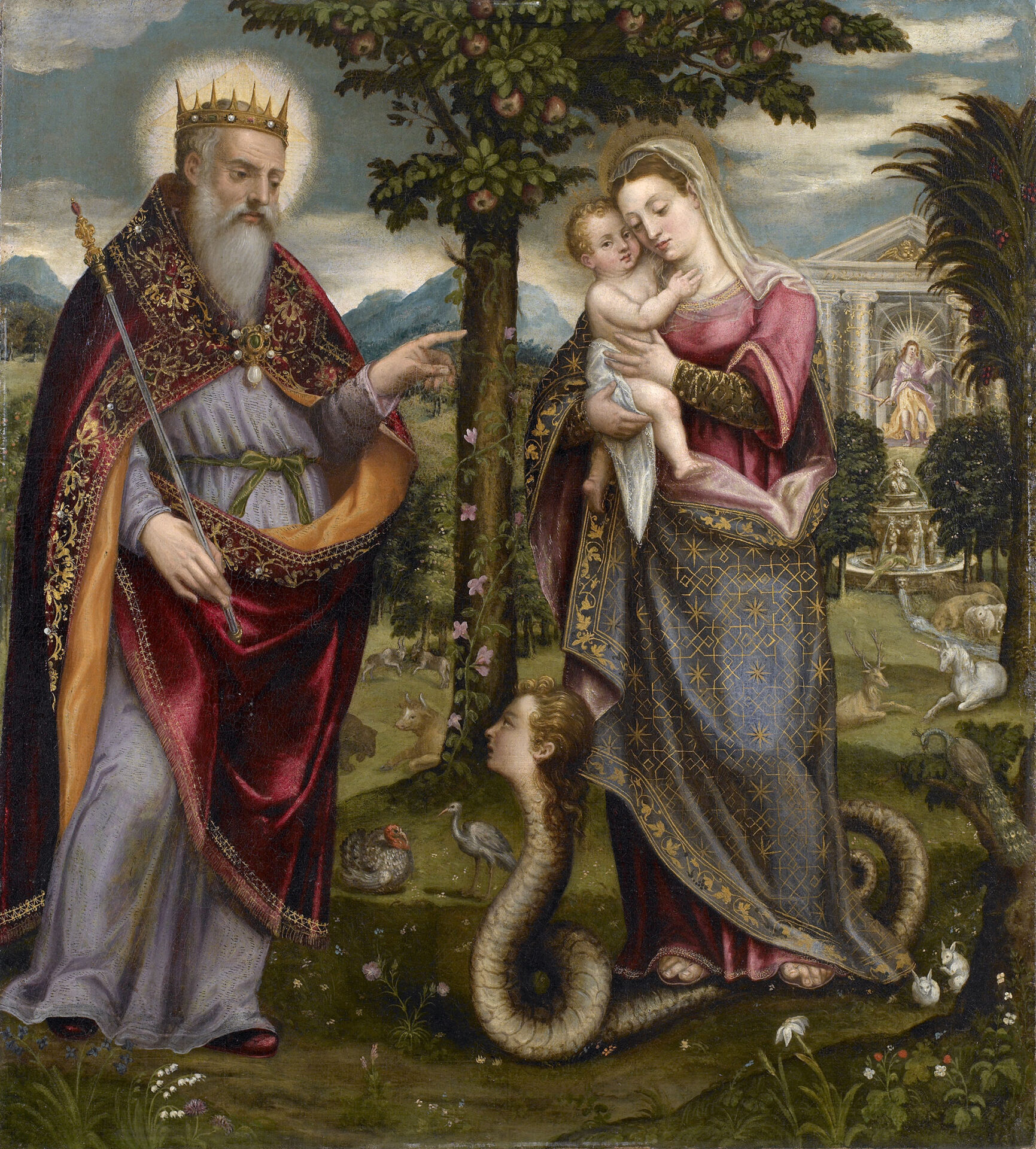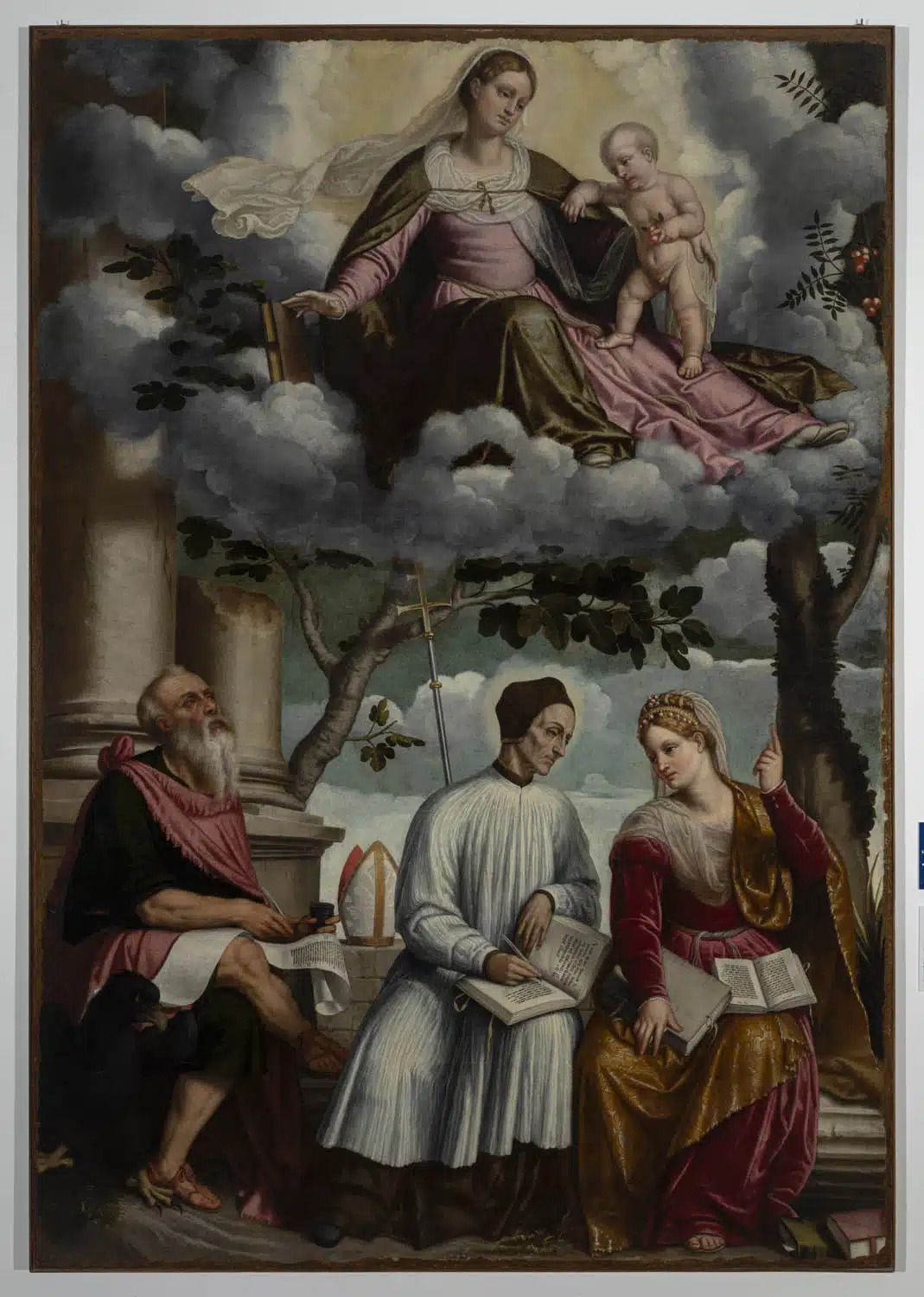Polyptych of St Ursula
Author: Antonio Vivarini (Murano 1418 circa-Venezia tra il 1476 e il 1484) Tempera e oro su tavola - 170x95 cm; 146x53 cm; 151x46 cm Provenance Brescia, Seminario Diocesano -
These three panels are part of a wider polyptych with at least two other panels with two other saints, the cymatium with more saints, and the platform on the bottom part with the episode of St. Ursula’s life.
Many authors of Brescia’s artistic literature remembered the polyptych inside the church of San Pietro in Oliveto. The first one was Ottavio Rossi in 1620: he ascribes the painting to Vincenzo Foppa without describing it in detail.
The committee of the polyptych is the Congregation of the Regulars Canons of St. George, born in Venice at the end of the 14th century. The company had been living in Brescia since 1437 in the monastery of San Pietro.
After the convent had been abolished under Napoleon, these three panels became part of the art collection of the Seminario Diocesano di Brescia, thus following the many transfers before being placed in the Museo Diocesano di Brescia.
The first mention of Antonio Vivarini as the author of the polyptych was suggested by Giovanni Battista Cavalcaselle in 1868 and confirmed in 1871 by the English critic Joseph Archer Crowe.
Gaetano Panazza and Camillo Boselli dated the artwork between 1440 and 1445 and underlined an artistic discrepancy between the side panels and the central one of St. Ursula. For this reason, they were the first to refer to a co-working between Antonio Vivarini, his brother Bartolomeo and his brother-in-law Giovanni d’Alemagna.
Around 1540, the central panel depicting St. Ursula and her companions inspired Alessandro Bonvicini, known as Moretto, for his two canvases with the same subject. One stays still now inside the Church of Saint Clement in Brescia. The second canvas was painted for the Church of Saint Mary Magdalene and now is exposed in the Pinacoteca of the Castello Sforzesco in Milan.
According to the legend, St. Ursula was the daughter of the King of England but secretly converted herself to the Christian faith. Instead of marrying a pagan prince, after a vision, she asked his father permission to wait three years more or until the prince converted himself to the same faith.
When time ran out, under the suggestion of another vision, the princess and ten thousand virgin companions started a pilgrimage to Rome, where the Pope had received them.
During the return trip, near the city of Cologne, the group was captured by King Attilas. He ordered his soldiers to kill all the virgins except Ursula because he wanted to marry her. The princess refused, so the king ordered her to be pierced by an arrow.
In the central panel, the princess is depicted at the center while holding the English flags. The crown on her head and the royal dress remark his royal lineage.
The decorativism of both the halo and the crown, the cannelloni-shaped drapery, the ivory incarnates with light pink shades, and her slight figure are the last residuals of the International Gothic style. At the same time, the thoughtful companions circling her vaguely forewarn the passage to Renaissance.
On the contrary, St. Peter and St. Paul recall the Renaissance period entirely. Their plastic vigor, severe composition, and molded figures are made with an efficient chiaroscuro and a more firm and solid drawing.





